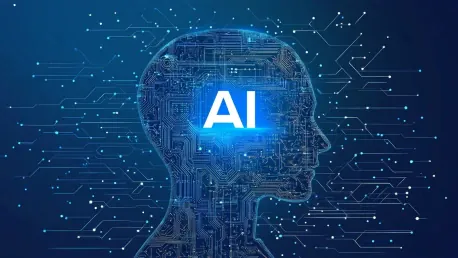Laurent Giraid is a technologist with expertise in Artificial Intelligence. He is particularly interested in machine learning, natural language processing, and the ethics surrounding AI. In this interview, Laurent provides insights into AMD’s recent acquisition of ZT Systems, the strategic implications of this move, and its potential impact on the AI infrastructure market.
Can you provide more details about AMD’s recent acquisition of ZT Systems?
AMD’s acquisition of ZT Systems is a strategic move into the AI infrastructure. ZT Systems specializes in cloud and AI infrastructure equipment for hyperscales. AMD sees this as an opportunity to integrate ZT Systems’ capabilities with their own CPU, GPU, and networking silicon to create advanced AI solutions.
What motivated AMD to acquire ZT Systems?
The main motivation was to accelerate the development of AI solutions by combining AMD’s existing technologies with ZT Systems’ expertise in data center infrastructure. This acquisition is expected to reduce design and deployment times, giving AMD a competitive edge in the rapidly evolving AI market.
How does this acquisition fit into AMD’s overall AI strategy?
Acquiring ZT Systems fits perfectly into AMD’s AI strategy, which emphasizes delivering end-to-end solutions optimized for large-scale AI deployments. It aligns with their goal of offering leadership training and inferencing solutions, leveraging an open ecosystem approach that incorporates open-source software and industry-standard networking technologies.
AMD mentioned the deal was worth $4.9 billion. What were the main factors behind determining this valuation?
The valuation was influenced by ZT Systems’ market position, their expertise in AI infrastructure, and the anticipated synergies with AMD’s current product offerings. The strategic benefits, combined with projected financial improvements, played significant roles in determining the value of the deal.
How does AMD expect this acquisition to impact its financial performance by the end of 2025?
AMD expects the acquisition to be accretive on a non-GAAP basis by the end of 2025. This means that integrating ZT Systems will enhance AMD’s earnings and overall financial health, contributing positively to their performance metrics.
How will the integration of ZT Systems’ expertise influence AMD’s product offerings?
Integrating ZT Systems will allow AMD to enhance their data center solutions with robust AI capabilities. Customers can expect more comprehensive AI products that leverage high-performance CPUs, GPUs, and advanced networking components, leading to faster and more efficient AI deployments.
Can you explain what kind of “end-to-end AI solutions” AMD aims to create post-acquisition?
The end-to-end AI solutions will encompass everything from hardware components like CPUs and GPUs to software frameworks and integration technologies. The goal is to offer turnkey solutions that cater to the entire AI deployment lifecycle from design to implementation.
How will the combination of AMD CPU, GPU, and networking silicon enhance these solutions?
Combining AMD’s CPU, GPU, and networking silicon will lead to integrated solutions that are optimized for performance and scalability. This synergy will reduce latency, increase processing speed, and enhance overall system efficiency, crucial for demanding AI applications.
Forrest Norrod highlighted the importance of reducing design and deployment time for AI systems. How does the acquisition of ZT Systems help achieve this?
ZT Systems’ expertise in system design and customer enablement plays a critical role here. By leveraging their capabilities, AMD can streamline the design and deployment processes, making it faster to bring AI solutions to market.
What specific innovations are expected to be delivered by AMD in the AI systems design domain?
Innovations are likely to include advanced integration techniques, improved data center infrastructure, and enhanced AI training and inferencing capabilities. These innovations will help AMD deliver optimized solutions tailored to specific customer environments.
AMD plans to eventually acquire ZT Systems’ U.S.-based data center infrastructure manufacturing business. What are the strategic benefits of this acquisition?
Owning the manufacturing business will give AMD greater control over the production processes, ensuring quality and consistency in their AI infrastructure products. This strategic move will also enable AMD to respond more agilely to market demands and technological advancements.
How does AMD plan to integrate this manufacturing business into its existing operations?
AMD plans to integrate the manufacturing business by aligning it with their Data Center Solutions business unit. This integration will involve streamlining operations, enhancing production capabilities, and leveraging the combined expertise for innovation in AI infrastructure.
Frank Zhang and Doug Huang have joined AMD in senior positions. What unique expertise do they bring to AMD?
Frank Zhang brings deep manufacturing expertise, which will be vital for integrating ZT Systems’ manufacturing capabilities. Doug Huang contributes extensive knowledge in data center platform engineering, helping to enhance design and customer enablement teams within AMD.
How will their roles within AMD differ from their previous roles at ZT Systems?
While their core expertise remains unchanged, they will now be focused on integrating ZT Systems’ capabilities with AMD’s broader technological strategies. Their roles will involve driving innovation, streamlining operations, and maximizing the potential of the combined teams.
Nvidia has also invested in AI infrastructure with CoreWeave. How does AMD’s strategy differ from Nvidia’s in the AI infrastructure domain?
AMD’s strategy focuses on creating an open ecosystem that leverages open-source software and industry-standard networking technologies. This contrasts with Nvidia’s more proprietary approach, allowing AMD to offer more flexible and customizable solutions to customers.
What competitive advantages does AMD believe it has over Nvidia?
AMD believes its open ecosystem approach provides a significant advantage, offering greater flexibility and choice to customers. Additionally, integrating ZT Systems’ capabilities enhances their ability to deliver comprehensive AI solutions faster and more efficiently.
AMD plans to maintain an open ecosystem approach. Why does AMD prioritize an open-source software environment?
An open-source software environment fosters collaboration, innovation, and customization, important for addressing diverse customer needs. It allows for the integration of various industry-standard technologies, ensuring compatibility and ease of deployment across different platforms.
How does AMD plan to integrate industry-standard networking technologies within this ecosystem?
AMD aims to seamlessly incorporate industry-standard networking technologies by leveraging ZT Systems’ expertise and their own advanced silicon solutions. This integration will enhance the performance and scalability of AI deployments, ensuring they meet the highest standards.
How does AMD foresee the future of the AI infrastructure market?
AMD anticipates significant growth in the AI infrastructure market, driven by increasing demand for scalable and efficient AI solutions. Trends such as the rise of AI-powered data centers and advancements in machine learning are likely to shape the landscape.
What trends are emerging that AMD believes will impact the AI infrastructure landscape?
Key trends include the need for faster and more efficient AI deployments, the integration of AI into various industries, and the importance of sustainable and scalable AI solutions. AMD is positioning itself to address these trends through innovation and strategic partnerships.
How is AMD positioning itself to address these trends and stay ahead of the competition?
By prioritizing an open ecosystem approach, focusing on end-to-end AI solutions, and leveraging the expertise of ZT Systems, AMD is well-positioned to lead in the AI infrastructure market. Their strategic investments and innovations aim to keep them ahead of evolving industry demands.
What are AMD’s long-term goals post-acquisition of ZT Systems?
AMD’s long-term goals include establishing leadership in the AI infrastructure market, delivering optimized AI solutions, and maintaining a flexible and innovative approach to meet future technological advancements. Success will be defined by their ability to offer comprehensive, scalable AI solutions that meet customer needs and drive industry growth.
Do you have any advice for our readers?Stay informed about technological advancements and the strategic moves of major players like AMD in the AI infrastructure domain. Understand the importance of flexibility and scalability in AI solutions to make informed decisions in your own ventures. Always prioritize innovation and adaptability to keep pace with the fast-evolving tech landscape.









